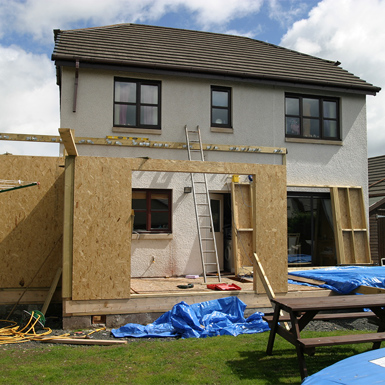Home Remodeling to Age in Place: What it Means Your Client
When you’re searching for ideas to boost your builders risk revenue, reassessing your current existing personal lines client base can be helpful. As time passes, the demographics of your book of business may change. Not only does that mean millennials might be looking to remodel their first home purchase, but that some adults are looking to tailor their home to better suit changing physical needs. In fact, the Joint Center for Housing Studies of Harvard University predicts baby boomers will account for approximately 56 percent of all residential remodeling spending by 2025.
According to the Farnsworth Group, clients who are remodeling their homes to age in place are the fastest-growing niche group of remodelers, accounting for 41.2 percent of top new revenue sources.
That shouldn’t come as any surprise, considering the number of Americans age 65 and older is projected to exceed 98 million by 2060, and rise to nearly 24 percent of the overall population, according to the Population Reference Bureau.
Aging in place is a type of design in which adults make changes to their home (or construct new homes, in some cases) with features that enable them to live there throughout their maturing years, rather than moving into a smaller home or assisted living facility.
Beyond the fact that living in one’s home is often more comfortable and familiar, an average assisted living facility can cost over $60,000 per year. While renovations can be expensive, they are a one-time expense, rather than an annual splurge. It’s no wonder many homeowners are choosing to age in place.
The National Home Builders Association’s aging in place remodeling checklist provides examples of these types of projects, which includes some of the following:
- Floor plan: Removing need for steps between rooms on the same level, creating 5’ X 5’ turn space in common areas and hallways, wide berth in doorways
Kitchen: Lowered sinks and counters, lever handles and / or pedal controls for faucet, removable base cabinets, lowered upper wall cabinetry, base cabinets with lazy susans and roll-out trays, pull-down shelving
Bathroom: Varied height cabinets and counters, contrasting color edge borders on base counter to account for lower vision, lowered tub or tub with walk-in access and door, bracing in and around tub and toilet, handrails, light in shower stall
Flooring: Smooth, non-glare, slip-resistant surfaces, low-pile carpet with firm pad, color/texture contrast to help with vision issues
Garage/Carport: Covered carport and walking areas, wider than average carports to accommodate vans with wheelchair lifts, increased door heights to accommodate vans with lifts, ramps and handrails
Exterior: Swapping out high-maintenance plants for easy-to-manage shrubbery and hardy plants
While this is only a sample of common home changes clients make for their later years, it brings to mind the numerous modifications that could cause costly financial loss without home remodeling builders risk insurance in place during the course of construction. With the Builders Risk Plan insured by Zurich, homeowners and contractors have access to “A” rated coverage for everything from minor changes like replacing cabinets to major structural changes like installing elevators and removing load-bearing walls.
Taking on even the most minimal renovation projects can bring your clients face to face with lots of costly exposures. For a closer look at these risks and to learn how home remodeling insurance can help, download Renovation Risks: Why Homeowners Need Home Remodeling Insurance.
This is intended as a general description of certain types of insurance and services available to qualified customers. Your policy is the contract that specifically and fully describes your coverage. The description of the policy provisions gives a broad overview of coverages and does not revise or amend the policy.











